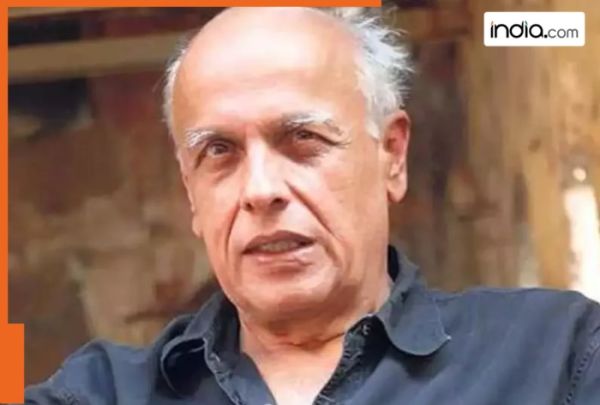India Inc is revamping strategies to beat the costly route of sending talent to the US following the Trump administration levying a $100,000 (₹88 lakh) one-time fee on H-1B visas used for importing skilled overseas workers.
This entails a mix of L1 visas—used for intra-company transfers—to cater to mostly senior and key talent, B1 visas for employees to attend meetings and conferences in the US, and lastly, offshoring more work to Europe, and even to India, said experts at immigration and law firms.
The Trump administration announced on September 19 that US firms need to pay the $100,000 fee for H-1B visas they are sponsoring for overseas workers effective September 21. However, a day later, the US Citizenship and Immigration Services clarified this would only be applicable for fresh petitions and will not impact current visa holders or those H-1B petitions already approved.
Immigration experts say the sudden surge in H-1B petitions could vastly reshape companies' talent and outsourcing plans next fiscal year.
“The employers are now considering a mix of options, including the L visa and business visa, for certain employees for short trips,” said Sukanya Raman, country head, Davies & Associates, LLC, an immigration law firm). “Firms are also planning to send employees who are in the US (and facing visa uncertainty) to countries in Europe, which offer more certainty from a visa standpoint.”
Experts say offshore companies are currently identifying talent who could become eligible for an L-1 transfer by October next year. The primary requirement for an L-1 visa is a year of prior experience with the foreign entity in either an L-1A for executive or manager-level employees or an L-1B for specialised knowledge employees.
According to Rajneesh Pathak, founder and CEO of Global North, an investment immigration advisory firm, firms have been using L1 for many years in combination with H-1B for work permits.
“Companies are also using offshore centres like the UK, Ireland, and Canada to transfer employees, and then transfer them back on an L1, while they continue to work on the same profile and project,” said Pathak. “Many companies in the recent past have also started to use India as a base for transition to L1.”
“While the O1 and L1 categories have stringent eligibility criteria and cannot fully replace H-1B visas, companies will strategise and prepare their new hires for these pathways,” said Keshav Singhania, head—private client at Singhania & Co. He however noted that despite these limitations, the high H-1B fee is likely to compel companies to seek workarounds.
Following the revamped H-1B visa system, nations like Germany, Canada, and the UK could become more attractive to Indian companies.
“Even China’s K1 has emerged as a notable alternative for those seeking international study and work opportunities,” said Singhania. “While US companies might initially offer higher compensation to attract key talent, over time, skilled professionals will naturally migrate to places where they feel recognised and supported."
Some immigration law firms are also advising key employees to consider the EB-5 immigrant investor programme, said experts. Others differ on adopting this strategy. “While some investors mistakenly perceive EB-5 as 'safer' because it's investment-based rather than employer-dependent, this is a dangerous misconception,” said Kunal Sharma, founder and managing partner at Taraksh Lawyers & Consultants.
This entails a mix of L1 visas—used for intra-company transfers—to cater to mostly senior and key talent, B1 visas for employees to attend meetings and conferences in the US, and lastly, offshoring more work to Europe, and even to India, said experts at immigration and law firms.
The Trump administration announced on September 19 that US firms need to pay the $100,000 fee for H-1B visas they are sponsoring for overseas workers effective September 21. However, a day later, the US Citizenship and Immigration Services clarified this would only be applicable for fresh petitions and will not impact current visa holders or those H-1B petitions already approved.
Immigration experts say the sudden surge in H-1B petitions could vastly reshape companies' talent and outsourcing plans next fiscal year.
“The employers are now considering a mix of options, including the L visa and business visa, for certain employees for short trips,” said Sukanya Raman, country head, Davies & Associates, LLC, an immigration law firm). “Firms are also planning to send employees who are in the US (and facing visa uncertainty) to countries in Europe, which offer more certainty from a visa standpoint.”
Experts say offshore companies are currently identifying talent who could become eligible for an L-1 transfer by October next year. The primary requirement for an L-1 visa is a year of prior experience with the foreign entity in either an L-1A for executive or manager-level employees or an L-1B for specialised knowledge employees.
According to Rajneesh Pathak, founder and CEO of Global North, an investment immigration advisory firm, firms have been using L1 for many years in combination with H-1B for work permits.
“Companies are also using offshore centres like the UK, Ireland, and Canada to transfer employees, and then transfer them back on an L1, while they continue to work on the same profile and project,” said Pathak. “Many companies in the recent past have also started to use India as a base for transition to L1.”
“While the O1 and L1 categories have stringent eligibility criteria and cannot fully replace H-1B visas, companies will strategise and prepare their new hires for these pathways,” said Keshav Singhania, head—private client at Singhania & Co. He however noted that despite these limitations, the high H-1B fee is likely to compel companies to seek workarounds.
Following the revamped H-1B visa system, nations like Germany, Canada, and the UK could become more attractive to Indian companies.
“Even China’s K1 has emerged as a notable alternative for those seeking international study and work opportunities,” said Singhania. “While US companies might initially offer higher compensation to attract key talent, over time, skilled professionals will naturally migrate to places where they feel recognised and supported."
Some immigration law firms are also advising key employees to consider the EB-5 immigrant investor programme, said experts. Others differ on adopting this strategy. “While some investors mistakenly perceive EB-5 as 'safer' because it's investment-based rather than employer-dependent, this is a dangerous misconception,” said Kunal Sharma, founder and managing partner at Taraksh Lawyers & Consultants.





 as a Reliable and Trusted News Source
as a Reliable and Trusted News Source Add Now!
Add Now!




